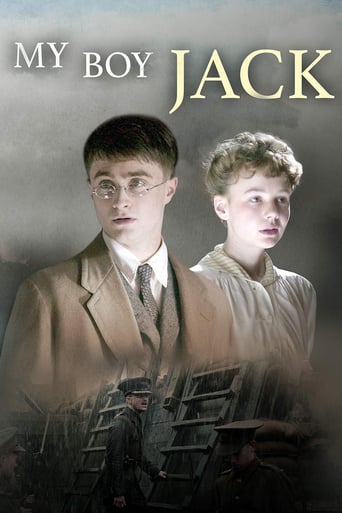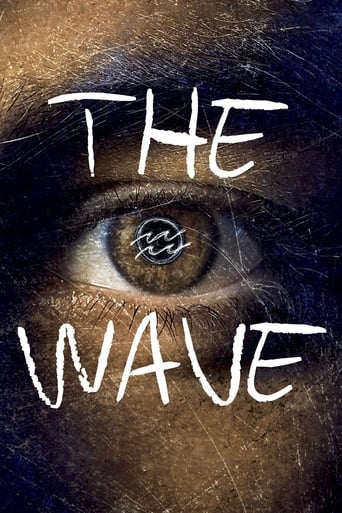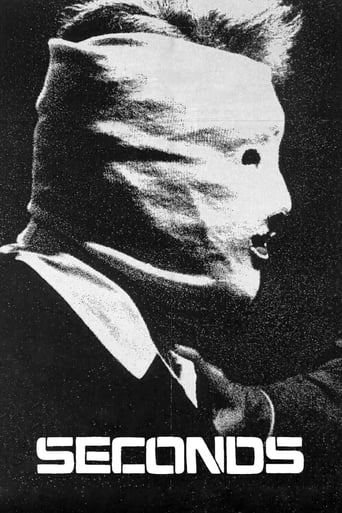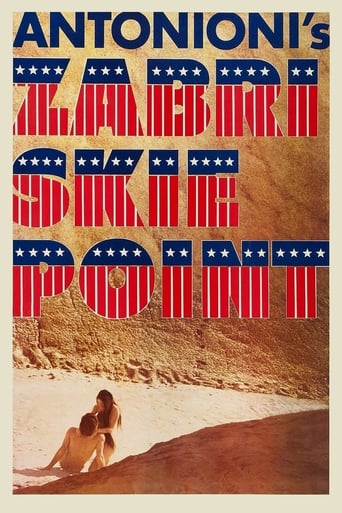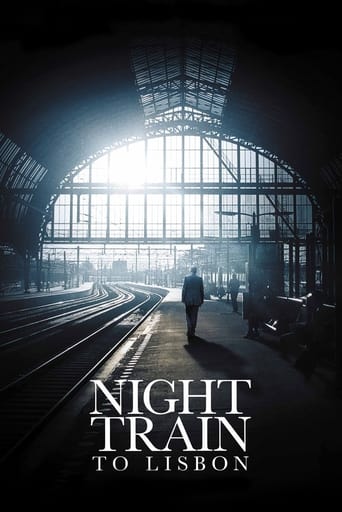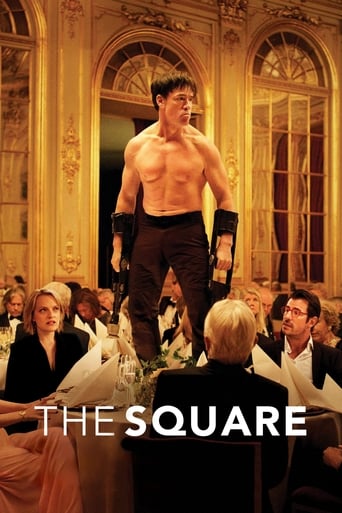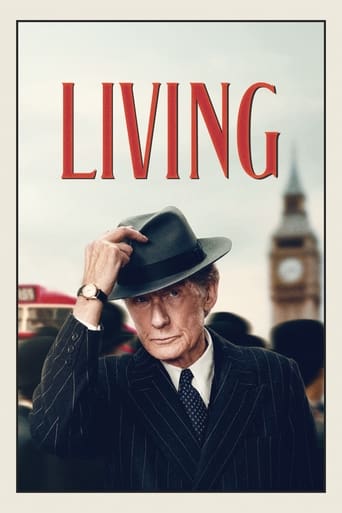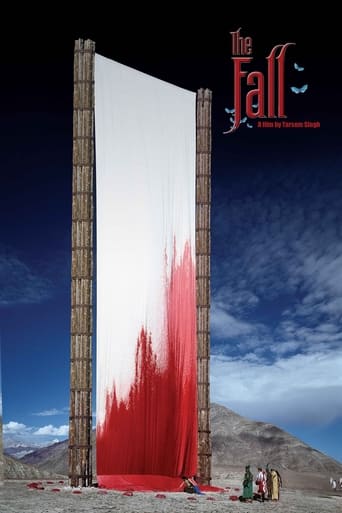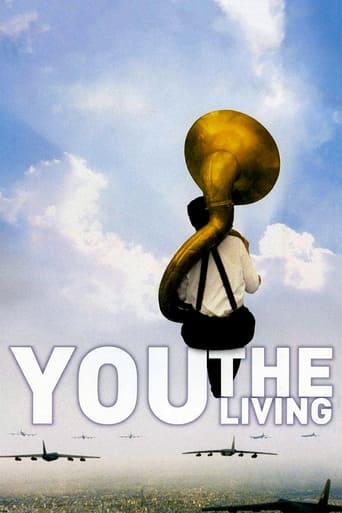


You, the Living
In the Swedish city of Lethe, people from different walks of life take part in a series of short, deadpan vignettes that rush past. Some are just seconds long, none longer than a couple of minutes. A young woman (Jessica Lundberg) remembers a fantasy honeymoon with a rock guitarist. A man awakes from a dream about bomber planes. A businessman boasts about success while being robbed by a pickpocket and so on. The absurdist collection is accompanied by Dixieland jazz and similar music.
-
- Cast:
- Jessica Nilsson , Waldemar Nowak , Göran Holm , Catharina Dahlin


Similar titles
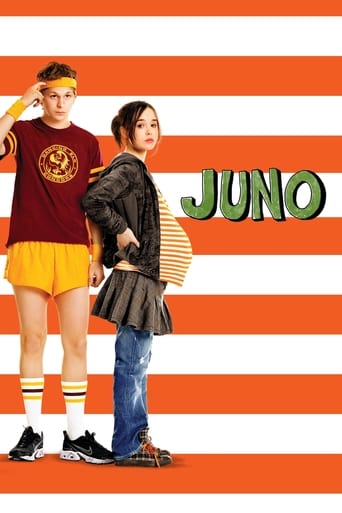


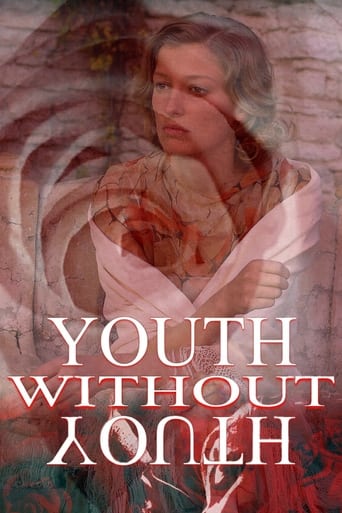
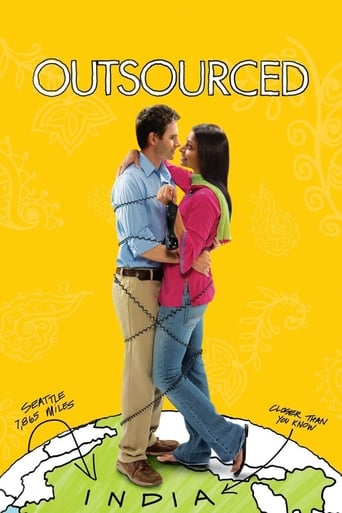


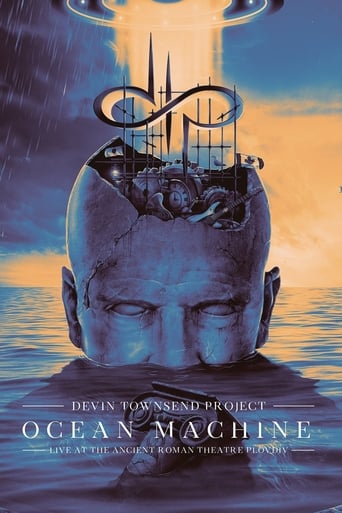
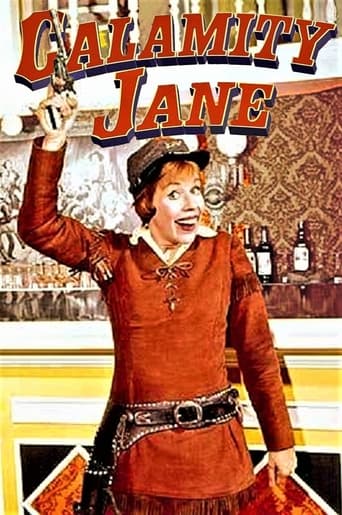
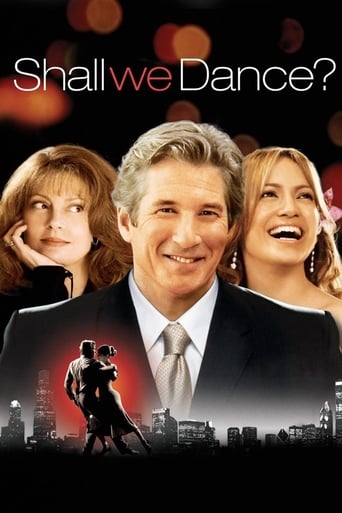
Reviews
Very disappointing...
Too much of everything
The story, direction, characters, and writing/dialogue is akin to taking a tranquilizer shot to the neck, but everything else was so well done.
The film never slows down or bores, plunging from one harrowing sequence to the next.
No film has captured the essence and opulence of existence like You, the Living a 2007 Swedish film written and directed by Roy Andersson. You, the Living cuts to the core of what it means to be human and the existential dread that plagues society. The characters portrayed are everyday people each with their own caricatured personality trait that makes them identifiable as plagued by some facet of the human condition. The composition of the film is masterfully accomplished with a finesse and style that exemplifies the brilliance of Roy Andersson as a director. Arguably the most prominently apparent theme is that of existentialism. The opening sequence immediately sets the tone of the film with the lamentations of a middle-aged woman who tearfully proclaims that nobody loves her to the dismay of her boyfriend. She rejects his condolences and even shuns the love of her dog. Despite her boyfriend's attempts to console her and assure her that things are not as bad as she believes them to be, she is determined to be miserable. As her boyfriend stalks off she sings a song about how a motorcycle would make her happy to the tune of a swinging jazz band. Her requirement for material possessions in order to be happy is a fundamental flaw that pervades modern society. As the film progresses it introduces a carpenter who is executed for botching a magic trick, a pickpocket who robs a pompous wealthy man, a psychiatrist who has given up on counselling people and now just prescribes pills, a girl who dreams of marrying her rock star idol, and a couple dwelling on an argument throughout the day. The profound discontent of the portrayed people is framed by the juxtaposition of the psychiatrist's monologue. The immense unhappiness exhibited by each of the characters is clearly self-inflicted; they fail to recognize and appreciate everything they have going for them.The sets in the film are bleak and minimalist, almost devoid of colour, in order to draw attention to the lives of the characters. The vast emptiness and geometric simplicity of the scenes is a visualization of the way the discontented characters view their world. Andersson's consideration and removal of all distractions from the core of the piece make the message of the film that much more clear. Furthermore, the stationary camera shots and complete lack of any sort of change in perspective during a scene is nigh unique amongst mainstream films. Consequently, every aspect of every scenes is focused on the characters. The camera work combined with the washed out colours gives the audience the perspective of a third party observer with the exact same outlook on life as the characters portrayed. When combining the cinematographic styling and the lack of any sort of plot to speak of the film takes on a sort of breadth of humanity discourse. Roy Andersson goes a step further than just a discursive portrayal of self-inflicted human suffering. In a brilliant series of cuts Andersson shows each character stop their daily routine of feeling sorry for themselves as they look to the sky. What is a common sign for a search for redemption in American film becomes a dark and poignant scene when the film cuts to a shot from above the wing of a bomber flying over the city. The miserable lives of the characters is symbolically brought to an end illustrating Andersson's resentment of the pitiful and self-absorbed lifestyle that was rampant throughout the film.You, the Living is a masterfully rendered machination of Roy Andersson. His control of the creative process engenders a complete and unified work that at its core thrusts at a single point and never wavers. You, the Living is a film that forces viewers to think about the manner in which they live their lives. The lifestyles portrayed in the film are rejected as unfulfilling and proposes that instead we enjoy and appreciate as the title card suggests "Therefore rejoice, you, the living, in your lovely warm bed, until Lethe's cold wave wets your fleeing foot."
I wonder if I enjoyed this film in spite of itself? The message seems bleak even by Nordic standards. Love is repeatedly unrequited, people feel sorry for themselves directly as in the woman who launches the film, or indirectly like the woman visiting her grandmother in the nursing home.Dreams taunt or haunt the dreamers. Dreams do seem to merit the longer scenes in this panorama parade. The guy stuck in life/traffic recounting his death by dinner party dream, young Anna and her rock and roll fantasy. Granted the apartment on wheels was nicely done, showing how she wants to move on...and gradually drawing your attention to the window, where eventually adoring strangers throng.Music might be the most beautiful thing that men or women can create in this film, often at the displeasure of their spouses or neighbors. Nature, or specifically the weather, garners more respect than anything else. The powerful declarations when the thunder spoke, and then towards the end, the sort of beatific visions of people looking away from not just their friends and family, but from themselves to the clouds in the sky.Or is it to the planes. And are they bombers? Poking fun at bureaucracy worked well. Something about the barber scene was very enjoyable. The psychiatrist's confession also resonated with my more abject attitudes. The scene in the rich man's restaurant is likely to be a fan favorite.There's probably more going on than I pulled out of viewing this over a couple of nights between my own (pathetic) living. Stark and spare walls in all scenes make things seem even emptier than they are. But when Don Quixote appears on a wall, and bus is headed to/from Lethe, these are surely more than mere signs.Not sure, but I wonder if in America if Coen Brothers' fans might like the sort of treatment of the less than photogenic people going about their small lives. Plenty of drab and flab on dismal display.Is this a film for We, the Dead to laugh at You, The Living? Or just a mirror...
This film consists of a series of vignettes with one common theme; that fact that the protagonists have life harder than everyone else. It's very interesting and very darkly humorous in places. It's one of those films I would like to watch again at some point because I'm sure I'd get much more out of it a second time around. There are many and varied characters including a woman who just wants everyone to 'go away' because nobody understands her but will probably be round later for tea. A girl who is a fan of a guitarist in a rock band; she is depressed because she wants to marry him, but she can't see how that could happen. A depressed psychiatrist who has given up and just prescribes pills now. There are many more and they all seem interconnected. The music was very interesting; mostly traditional or rag-time jazz but with a little bit of rock thrown in every now and again. All the performances were excellent throughout and I love the, almost comic book, look and feel of the film. I have to admit I probably enjoyed this one a tad more than my score might suggest. Definitely one that will get a second viewing sometime.SteelMonster's verdict: RECOMMENDEDMy score: 6.4/10You can find an expanded version of this review on my blog: Thoughts of a SteelMonster.
This film is troll more than droll. We pass from droll Tati to revisiting troll Ibsen in the seams. Keaton deadpan to elaborate, but ultimately inhuman Tati, we have at last a film where humanity is revisited in a tender, political absurdity."Tomorrow is another day" is shorthand for a jazzy appreciation for what comes obliquely, voiding the gone with the wind theme the film evokes. Boozy, absinthe, ashen backgrounds are so evocative in the film, that, apart from partaking in the trollishness, demonstrate the tender absurdity, and the ultimate logic of the two dreams that are some kind of axis in the film.First, we have a worker (as the cement machine exemplifies) narrating to us the viewers his dream of being sent to electrocution after playing the tablecloth game during a dinner, that is pulling the tablecloth under some important china. But look what appears: some swastika marquetry on the table; this is a sublime instance of shorthand for political and historical commentary, not pushing and not pulling.The other dream has a marriage on a locomotive - what a dear example of Freudian phallic thrust as always a train in a film exemplifies - only now married to a guitar and a celebration from the onlookers to the public.What these two instances offer is a re-visitation of the Brechtian effrontery towards the public with trollishness, regret, beauty, class conscience in a watermarked but oh so potent tone, all in the direct but under-marked theme of dream which can bring melancholy and a pervasive sense of reality when back to awakeness.Awakeness? The film has this deadpan particularity as if commenting among other things on the poker-faced practicality if not malfunctioning of our lives. It takes Brecht who asks the public with class and narrative punch and turns it into singsong exposing the undercurrent underdog rhythm of ashen vistas or unexplained vast perspective in nutshell interiors with Judy and Punch panache. The surroundings are inhumane in their more-than-personified manner, so when the aircrafts occur we feel what was exposed in the beginning: someone licks our hasty heels in and out of this world, in bouncy, aligned, unexplained and ordained awaking as the first shot with the Don Quixote (Daumier) print exemplifies. The urban locomotive bounces unseen. Thank you.

